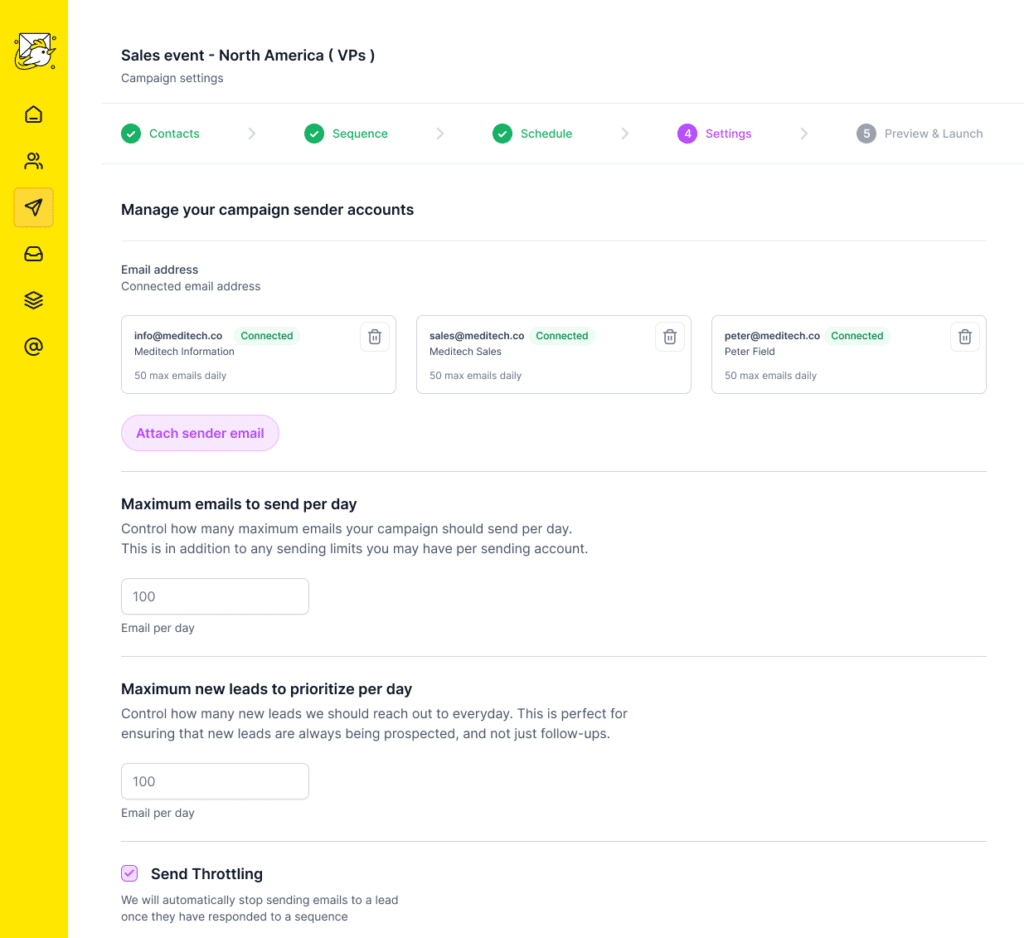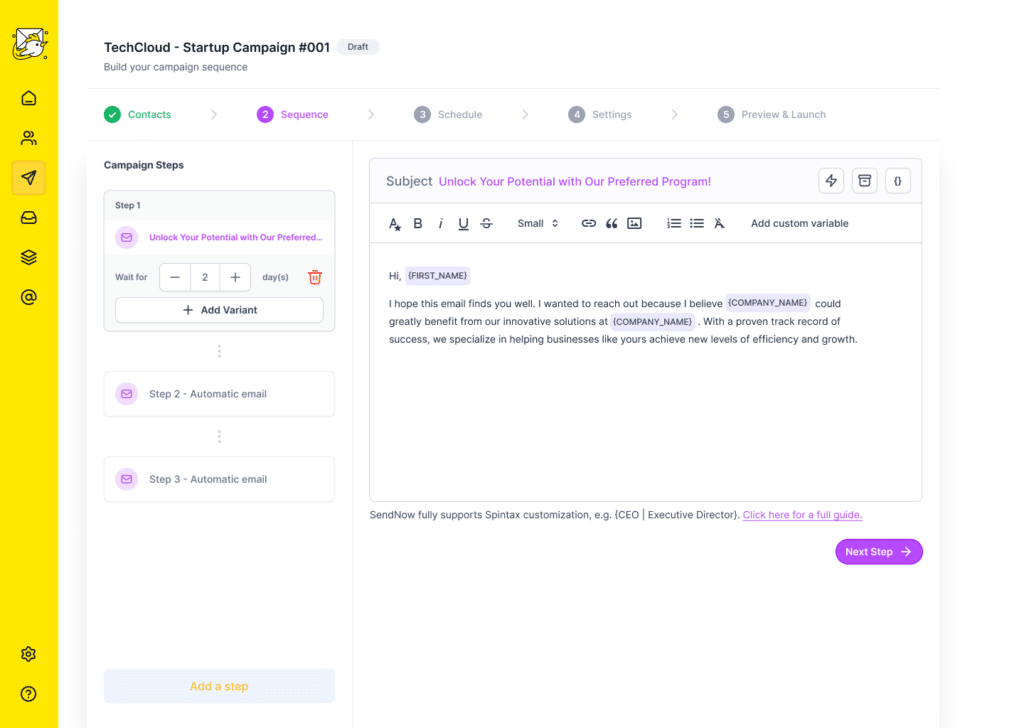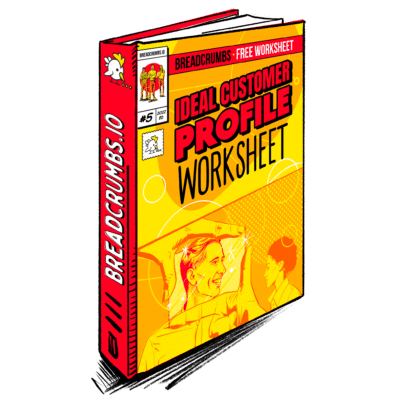DEFINITION
A cold email is a type of unsolicited email sent to a potential client, customer, or contact with whom you’ve had no previous relationship or interaction. Its purpose is often to introduce yourself or your business, pitch a product or service, or request a meeting or collaboration.
Understanding Cold Email Outreach
For many, the term “cold email” may immediately conjure up images of unwanted spam cluttering their inboxes. However, when done right, cold emailing can be a powerful tool for establishing new business relationships and generating leads.
The problem today is that we are inundated with emails. The average office worker receives 121 emails per day, making it challenging for your message to stand out. Furthermore, people have become wary of unsolicited emails due to the prevalence of spam and phishing scams, adding another layer of difficulty.
This is where the concept of cold email outreach comes in. By crafting personalized, targeted, and value-driven emails, you can cut through the noise and connect with your recipients. A well-executed cold email is more than just a sales pitch; it’s an opportunity to establish a relationship and provide value to the recipient.
Takeaway
The key takeaway is that successful cold email outreach hinges on personalization, relevance, and value. It’s not about sending as many emails as possible; it’s about sending the right email to the right person at the right time.
To achieve this, you need to understand your target audience, research each recipient, craft a compelling subject line and body copy, and follow up appropriately. Remember, the goal isn’t necessarily to make a sale with the first email but to start a conversation and build a relationship.
Ready to accelerate your revenue?
Start closing better deals faster, expanding into your customer base and holding on to customers longer (we do retention too)!
What is a cold email, and how does it differ from other types of business communication?
A cold email is a type of business communication sent without prior contact. It’s similar to a cold call but over email. The objective can vary: introducing a product or service, requesting a meeting, pitching an idea, or applying for a job.
Unlike newsletters or promotional emails, these emails are not sent to existing subscribers or customers. Instead, they target individuals or businesses fitting a specific demographic or customer profile without prior knowledge or relationship with the sender.
What distinguishes cold emails from spam is their purpose and execution. While spam emails are unsolicited bulk messages with little personalization, cold emails are highly targeted and personalized. A well-crafted cold email addresses the recipient by name, mentions specific details about them or their business, and presents a clear, relevant proposition.

Legitimate cold emails comply with anti-spam laws, including a valid return address, identifying the message as an advertisement, and providing a clear opt-out method. In contrast, spam emails often violate these requirements and aim to deceive or mislead recipients.
What are the key components of an effective cold email?
An effective cold email generally includes a compelling subject line, a personalized introduction, a clear and concise message body, a strong call to action, and a professional signature. It should provide value to the recipient and make it easy for them to understand what you’re offering and the next steps. Let’s break down these components a bit further:
- Compelling Subject Line: Make it engaging, relevant, and create curiosity or urgency. Personalize it by including the recipient’s name or a reference to their business for higher open rates.
- Personalized Introduction: To quickly establish a connection with your recipient, the opening of your email should mention a shared contact, refer to something specific about their business, or compliment them on a recent achievement. The goal is to show that the email is personalized, not mass-sent.
- Clear and Concise Message Body: In your email, clearly state your purpose. Be concise and avoid jargon when pitching a product, requesting a meeting, or seeking advice. Make it easy for the recipient to understand what you want and why it matters.
- Strong Call to Action: After reading your email, the recipient should know the exact action you want. It could be scheduling a call, checking out your product, or simply replying. Make the call to action clear, and compelling, and limit yourself to one main action per email to avoid confusion.
- Professional Signature: End your email with a professional signature that includes your full name, position, company, and contact information. It adds credibility and makes it easy for the recipient to get in touch if they choose to respond.
How can you personalize a cold email to increase its chances of getting a response?
Personalization goes beyond just addressing the recipient by their name. It involves tailoring your message to address their specific needs, interests, or challenges, even incorporating Gen Z slang words for a younger target audience. This could involve referencing their work, commenting on a shared connection or interest, or offering a solution to a problem they’re facing. Let’s delve deeper into personalization for cold emails:
- Understand Your Recipient: To personalize your email effectively, understand the recipient by researching their role, industry, and company. Gain insights into their needs, interests, or challenges through their LinkedIn profile, company website, or recent news articles.
- Reference Specific Details: Include what you’ve learned in your email after conducting research. This could mean referencing a recent blog post, project, or company challenge. You demonstrate that you’ve taken the time to understand their needs by mentioning specific details.
- Tailor Your Value Proposition: Tailor your value proposition to address the recipient’s specific needs or challenges. When pitching a product or service, explain how it solves their problems or helps achieve their goals.
- Use a Personalized Subject Line: A personalized subject line can greatly boost email open rates. This may include the recipient’s name, their company, or a shared connection/interest.
- Follow Up With Context: When sending a follow-up email, refer to the previous interaction for context. It demonstrates attentiveness and reminds the recipient of your identity and purpose.
What are some common mistakes to avoid when crafting a cold email?
Common mistakes include sending generic, impersonal emails; focusing too much on selling instead of providing value; using misleading subject lines; making the email too long; and not including a clear call to action.
Let’s delve into these mistakes a bit more:
- Sending Generic, Impersonal Emails: Personalization is key in cold emailing. Generic or impersonal emails are often ignored. Avoid using “Dear Sir/Madam” and address the recipient by their name. Tailor your message to their needs, interests, or challenges.
- Overly Salesy Approach: While the goal of your email may be to sell, avoid excessive focus on selling. Instead, offer value by demonstrating how your product or service can solve a problem or help achieve goals.
- Using Misleading Subject Lines: Use a subject line that accurately reflects your email content. Misleading subject lines can lead to recipient distrust and reduced engagement.
- Long, Overcomplicated Emails: Your recipient is probably busy, so keep your email concise. Avoid jargon or complex language. Make it easy for the recipient to understand what you’re asking for and why it matters.
- No Clear Call to Action: After reading your email, the recipient should know exactly what action to take next. Whether it’s scheduling a call, checking out your product, or simply replying, make your call to action clear and compelling.
- Not Proofreading: Typos, errors, or incorrect info can harm credibility and reduce response rates. Proofread emails before sending them.
- Not verifying your email list: Neglecting this can result in low response rates and damage your sender’s reputation. A verified email list ensures your message reaches the intended audience, boosting outreach efficiency and increasing chances of a positive response.
How can you ensure your cold email doesn’t end up in the recipient’s spam folder?
To avoid being marked as spam, ensure your email complies with anti-spam laws, including a clear way for recipients to opt-out. Avoid spam trigger words in your subject line and email body, use a reputable email service provider, and ensure your email is personalized and relevant to the recipient.
Countries have varying laws on spam emails. Generally, you must include a valid postal address and an opt-out option for recipients. Complying with these laws is crucial to avoid spam folders and protect your business’s reputation.
Certain words and phrases, such as “free,” “guarantee,” “no obligation,” or “make money,” can trigger spam filters. To avoid your email being flagged as spam, maintain a neutral and professional tone. Spam filters consider the sender’s reputation when deciding whether to mark an email as spam. Opting for a reputable email service provider can help ensure your emails reach the recipient’s inbox.
A personalized and relevant email is less likely to be marked as spam. Tailor your message to the recipient’s specific needs, interests, or challenges. Personalized emails are more likely to be opened, read, and not flagged as spam. Keep your email design clean, simple, and professional, with limited use of images and links.
Can you provide examples of successful cold email subject lines?
Successful subject lines are often short, intriguing, and personalized. Examples could include “Idea for [recipient’s challenge],” “[Your name] + [Recipient’s name]: Potential collaboration?” or “How [your product/service] can help with [recipient’s problem].”
Let’s delve deeper into these examples:
“Idea for [recipient’s challenge]”: This subject line shows that you’ve done your homework and understand the recipient’s challenges. It suggests that you’re offering a solution, which can prompt the recipient to open the email out of curiosity or interest in solving their problem.
“[Your name] + [Recipient’s name]: Potential collaboration?”: This subject line is personalized and proposes a benefit to the recipient – a potential collaboration. It’s intriguing and suggests a mutually beneficial relationship, which can appeal to many professionals.
“How [your product/service] can help with [recipient’s problem]”: This subject line clearly states what the email is about and why it’s relevant to the recipient. By specifying how your product or service can solve the recipient’s problem, you provide a compelling reason for them to open the email.
The subject lines are concise, personalized, and value-oriented in all these examples. They give the recipient a clear idea of what to expect from the email while piquing their interest enough to encourage them to open it.
What is the ideal length for a cold email, and why does it matter?
Cold emails should ideally be between 50 and 125 words. People often lack time or patience for lengthy emails, especially from unknown senders. A concise email respects the recipient’s time, increasing the chance of it being read and understood.
Long emails may overwhelm and obscure your message, while a brief and focused email is more likely to capture attention and prompt a response.

The length of your email indirectly shows respect for the recipient’s time. Keep it concise and relevant to value their time, build a positive impression, and foster receptiveness. However, strike a balance by providing enough context and information for effective communication in cold emailing.
How can you follow up on a cold email without seeming too pushy?
Maintaining a respectful and patient tone is crucial to avoid being pushy. Understand that the recipient may be busy and have other priorities so that a gentle reminder can be more effective than a hard sell.
Adding value to each follow-up email increases the likelihood of a response. Share relevant articles or insights to help recipients overcome challenges. Show genuine interest in providing value, not just seeking a response.
Spacing out follow-ups is crucial. Sending too many emails in a short period can seem desperate or pushy. Waiting a few days between each follow-up allows the recipient to respond and shows respect for their time.
Lastly, always provide an opt-out option for recipients. Respecting their autonomy and complying with email marketing regulations.
What strategies can you use to improve your cold email response rate?
Strategies to improve response rates include targeting the right prospects, personalizing your emails, crafting compelling subject lines, providing value in your message, keeping your email concise, and following up appropriately. Let’s break these strategies down a bit:
Targeting the right prospects: It’s essential to research your prospects before sending cold emails. Understanding their needs, challenges, and industry can help you tailor your message to resonate with them. It also ensures that you’re reaching out to people likely to be interested in what you offer.

Ebook
Ideal Customer Profile (ICP) Worksheet
Learn how to create an Ideal Customer Profile and build a successful sales strategy with this Ideal Customer Profile (ICP) Worksheet.
Personalizing your emails: Personalization goes beyond just using the recipient’s name. It involves understanding their specific circumstances and tailoring your message accordingly. This could involve referencing their recent work, commenting on a common interest, or addressing a specific challenge they’re facing.
Crafting compelling subject lines: Your subject line is the first thing the recipient sees, so it needs to catch their attention and make them want to open the email. Effective subject lines are often short, intriguing, and personalized.
Providing value in your message: The content of your email should convey the value you’re offering. This could be a solution to their problem, an opportunity for collaboration, or valuable insights into their industry.
Keeping your email concise: As mentioned earlier, the ideal length for a cold email is between 50 and 125 words. Keeping your message short and to the point increases the likelihood that it will be read and responded to.
Following up appropriately: If you don’t get a response to your initial email, it’s important to follow up. However, this should be done in a respectful manner, providing additional value in each follow-up and giving the recipient ample time to respond between emails.
How can you measure the success of your cold email campaign?
The success of a cold email campaign isn’t just about the number of emails sent, but rather the actions that recipients take as a result. Here are some ways to measure it:

Open rate: This is the percentage of recipients who open your email. A high open rate can indicate that your subject line effectively grabs attention. However, it doesn’t necessarily mean your message resonates with recipients.
Response rate: This is the percentage of recipients who reply to your email. A high response rate indicates your email content is compelling and relevant to the recipients.
Conversion rate: This is the percentage of recipients who take the desired action after reading your email, such as signing up for a webinar, scheduling a meeting, or purchasing. A high conversion rate typically indicates that your email effectively persuades recipients to take action.
Number of meetings or sales generated: This can be a more concrete measure of success, especially for sales-focused campaigns. It shows not just how many people responded to your email but how many were interested enough to move forward in the sales process.
Qualitative feedback: While it’s not a numerical metric, feedback from recipients can provide valuable insights. If recipients take the time to write back with comments or questions, it can help you understand what’s working and what’s not, and adjust your strategy accordingly.
In essence, measuring the success of your cold email campaign involves looking at both quantitative metrics and qualitative feedback to understand how recipients are interacting with your emails and what results they’re driving for your business.
Ready to accelerate your revenue?
Start closing better deals faster, expanding into your customer base and holding on to customers longer (we do retention too)!


